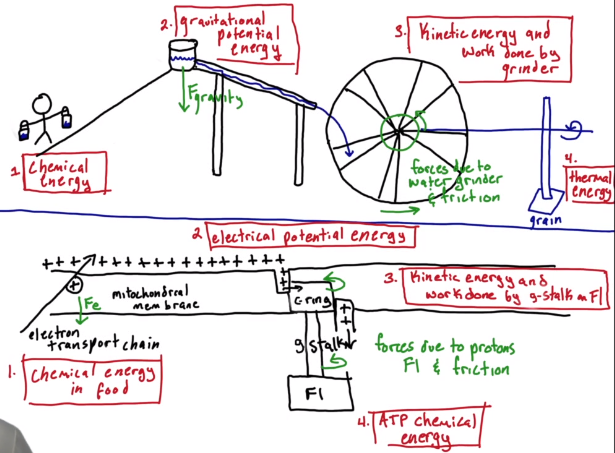Thermodynamics
The thermodynamics involved with driving you!ATP is a molecule that stores free energy or the capacity to do work. ATP is the driving force behind the cell, but what drives ATP? The answer to this question is in its creation. ATP synthase is a remarkable biological machine. It is a rotary machine that is composed of nearly 20 proteins driven by electric potential. In essence, the proton gradient is used to create mechanical motion which in turn allows for the highly unfavorable chemical reaction of synthesizing ATP to happen within ATP Synthase. This is incredible and happening right now inside you! Now into the thermodynamics. The actual mechanics of the structure of ATP is really interesting, but we can understand the thermodynamics of the machine without going too deep into the details. We will talk more about the physics of the rotation a bit later on. The Thermodynamics of ATP synthesis starts with the chemical energy used to transport protons across the membrane. Here the chemical energy of NADH and FADH2 are used to transport the H+ ions across the gradient. The chemical energy is needed to do work to get the H+ ions across the membrane because there is already an abundance of protons on that side "pushing" against the new addition. This gradient creates electric potential energy that is then used by ATP synthase for kinetic energy. The kinetic energy goes into the rotation of the biological machine. The work required at this point is very high. You can think of the "squishing" of ADP and the Phosphate group as friction going in the opposite direction of the rotation. The kinetic energy needs to be sufficient enough to overcome the friction of this reaction to create ATP. ATP in itself is a form a chemical energy that when going through hydrolysis is useful to cell for work. During hydrolysis, the bond between ADP and the third phosphate group is split, creating energy to be used by the body. One example of how ATP is used is by the muscles. The chemical energy of ATP then turned mechanical energy. Throughout all of these energy exchanges, heat is also released as a form of energy. This heat is useful for maintaining our body temperature. |
This diagram below is nice for a visual representation. It also has a great water wheel example to help with understanding the mechanism behind rotating ATP Synthase. I have linked a great video below, that is also where the diagram came from.
|
